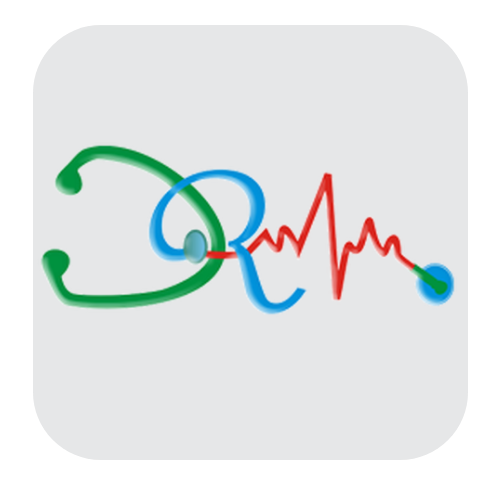Telehealth Reverse Diabetes and Restore Circadian Rhythm | Free Trial In Texas
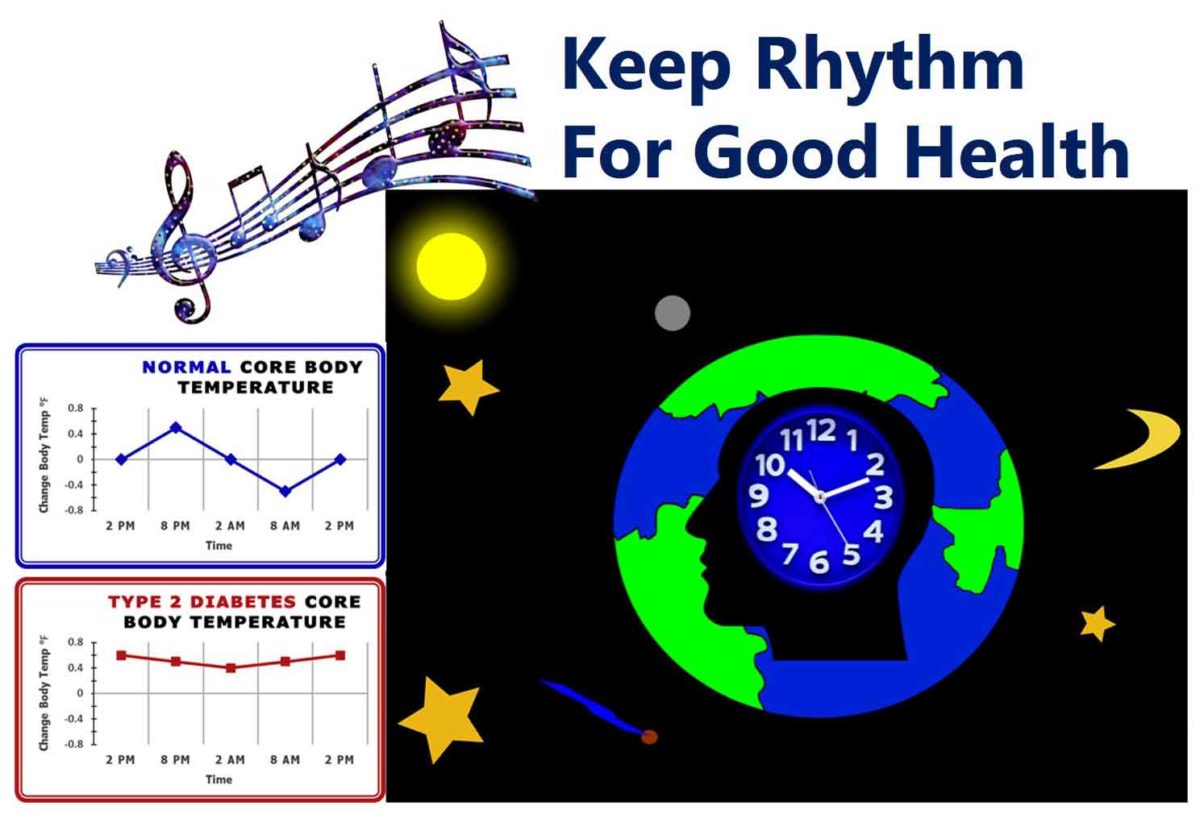
If high levels of sugar, fat and insulin in the blood don’t get cleared by morning, central control falls apart. Organs and tissues don’t know what’s going on and nothing works just right.
If you’re wondering, “How am I doing?” check what happens to your oral temperature and heart rate overnight. Temperature should go down about -1° F below evening values and heart rate should go down about -10 beats/min below resting daytime values.
If temperature doesn’t go down -1° F and heart rate down -10 beats/min overnight, there’s metabolic fixing to be done.
To learn more about the programs Herd Healthcare offers, our website is:
www.herdhealthcare.com
Circadian Rhythms
The Circadian Timing System functions in all organs and tissues. Metabolic systems in all cells are revved up when they’re most needed and damped down when there’s nothing for them to do. For example, the metabolic timing system in the pancreas prepares cells to secrete insulin before meals. Circadian timing systems in liver cells stimulate release of sugar during early morning hours before breakfast. When insulin levels in blood stay elevated all day and all night, circadian rhythms in muscle, liver and fat break down.
Central Control of all Circadian Clocks comes from the Brain. As shown in the Figure, the daily rhythms of Sleep, Food Intake, Heart and Circulation, Hormones and Body Temperature are controlled by the Brain. Day-night timing in response to outside changes in Light and Dark coordinate metabolic processes everywhere.
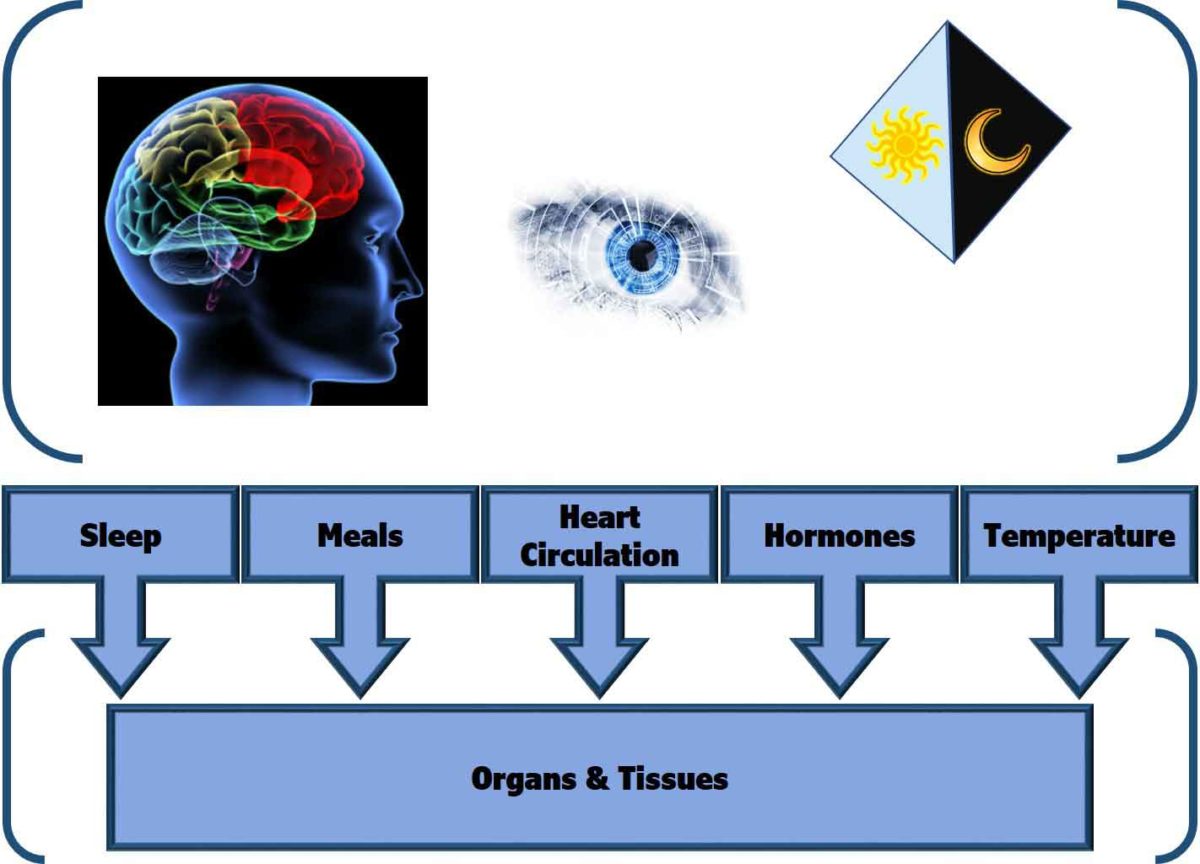
Except when Insulin levels stay high all night. Persistently elevated levels of insulin cause the brain to lose control over genetically determined mechanisms governing Circadian Rhythms.
Nobel Prize for Physiology or Medicine in 2017 went to Michael W. Young, Michael  Rosbash and Jeffrey C. Hall for their discoveries of molecular mechanisms controlling the circadian rhythms. They discovered a gene that encodes a protein that accumulates in the cell during the night, and is then degraded during the day. They also discovered a complex molecular network of clock genes and proteins.
Rosbash and Jeffrey C. Hall for their discoveries of molecular mechanisms controlling the circadian rhythms. They discovered a gene that encodes a protein that accumulates in the cell during the night, and is then degraded during the day. They also discovered a complex molecular network of clock genes and proteins.
These genes are among approximately 20,000 in the human genome. Most of them are “Junk Genes.” Probably 2,000 have really important function. However, all are transferred from generation to generation. Those that are important, regulate how we live and function.
There are molecular structures also inherited that are less permanent. They form the “Epigenome.” These are linked to circadian control of gene expression in organs and tissues throughout the body. Through this network, central circadian control is linked to cellular metabolic processes. The result is coordination of local peripheral action with all other metabolic functions.
Epigenomic effects can be reprogrammed by environmental, behavioral and therapeutic influences. Effect and efficiency of cell metabolism adapts local function to nutrition, physical activity, environment, medications and toxins.
Disruption Of Circadian Rhythmicity
Circadian Activity Dysrhythmia has been associated with poor health and disease. Age alone changes control of hormones, temperature, blood pressure, heart rate, sleep and activity. Disrupted circadian activity is associated with heart disease, stroke, cancer and dementia. Poor rhythms are pronounced in Alzheimer’s disease. It’s hard to sort out cause and effect but the association of dysrhythmia and dysfunction is strikingly obvious.
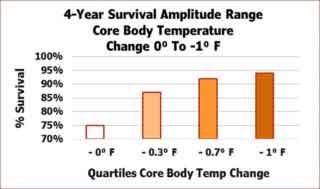 The effects of Circadian Activity Dysrhythmia on Mortality have been studied with 3,027 women in 4 clinical centers in the U.S. Women, 65 years of age and older were studied all day and all night for 3 days, using motion detectors. During 4 years of follow-up there were 444 deaths.
The effects of Circadian Activity Dysrhythmia on Mortality have been studied with 3,027 women in 4 clinical centers in the U.S. Women, 65 years of age and older were studied all day and all night for 3 days, using motion detectors. During 4 years of follow-up there were 444 deaths.
Analysis of actinographs showed clear diurnal patterns of body movements night and day. After corrections for age, body weight, exercise, disabilities and cognitive function, the diurnal activity measurements were divided into quartiles. As shown in the Figure, the quartile with the lowest peak activity levels had the greatest risk of mortality from all causes.
Studies reported by other clinical investigators showed strong correlation between Circadian Activity Rhythm and Core Body Temperature. The Figure shows the equivalent change in Core Body Temperature for each quartile of change in Circadian Activity Rhythm. Core Body Temperature reflects levels of Activity and Risks of Mortality.
Circadian Dysrhythmia links with Metabolic Abnormalities such as Type 2 Diabetes, obesity, and abnormal lipid function. Circadian clocks in the brain are linked to peripheral cells by body temperature, hormones, circulation, nutrition and physical activity.
Increased Insulin Resistance is particularly obvious with all metabolic abnormalities. So much so, that some investigators have concluded that Circadian Dysrhythmia causes Insulin Resistance. Clinical studies controlling levels of insulin and glucose have shown shifts in insulin resistance during the day without change in nutrition or physical activity. Apparently there is some direct effect of Circadian Dysrhythmia on Insulin Resistance.
 Shift Workers are at increased risk of Type 2 Diabetes. Shift workers are employed regularly outside the usual daytime working hours. Clinical studies have shown increased risk for metabolic syndrome, type 2 diabetes and cardiovascular disease. Studies of healthcare workers in the Nurse’s Health Study showed rotating night-shift work is associated with type 2 diabetes.
Shift Workers are at increased risk of Type 2 Diabetes. Shift workers are employed regularly outside the usual daytime working hours. Clinical studies have shown increased risk for metabolic syndrome, type 2 diabetes and cardiovascular disease. Studies of healthcare workers in the Nurse’s Health Study showed rotating night-shift work is associated with type 2 diabetes.
This association was mediated by obesity. Changes in eating behavior included irregular schedule of meals and increased caloric intake. Increased insulin resistance is an obvious consequence of obesity without invoking direct effect of Circadian Dysrhythmia on Insulin Resistance.
Chronic High Levels of Insulin destroy Circadian Rhythms of Insulin Resistance,  Metabolic Rate, Core Body Temperature, Heart Rate and Skin Circulation. Insulin Resistance occurs when excess calorie intake exceeds the storage capacity of glycogen and triglycerides in skeletal muscle and liver. Clearing sugar and fat from the circulation into fat tissue requires high circulating levels of insulin. When clearance isn’t complete by morning levels of insulin stay high.
Metabolic Rate, Core Body Temperature, Heart Rate and Skin Circulation. Insulin Resistance occurs when excess calorie intake exceeds the storage capacity of glycogen and triglycerides in skeletal muscle and liver. Clearing sugar and fat from the circulation into fat tissue requires high circulating levels of insulin. When clearance isn’t complete by morning levels of insulin stay high.
Insulin acts directly on nerve cells in the brain that control metabolic rate and core body temperature. When insulin levels stay high, metabolic rate stays high, core body temperature doesn’t fall overnight and heart rate doesn’t dip before morning.
Nocturnal Non-dipping Of Heart Rate Predicts Cardiovascular Events In Hypertensive Patients. The effects of overnight dips in Heart Rate on risk of cardiovascular events were studied in 457 Japanese men over the age of 50 years. All had systolic blood pressure over 140 mm Hg and about half of them had type 2 diabetes.
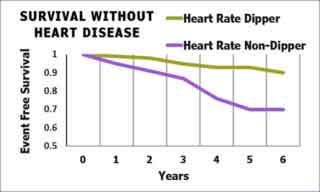 As shown in the Figure, the risk of cardiovascular events was 2.4 times greater in the 99 men whose heart rate did not decline at night compared to those whose heart rate declined more than -10% compared to average values recorded while awake. The association was not affected by systolic blood pressure or status of diabetes.
As shown in the Figure, the risk of cardiovascular events was 2.4 times greater in the 99 men whose heart rate did not decline at night compared to those whose heart rate declined more than -10% compared to average values recorded while awake. The association was not affected by systolic blood pressure or status of diabetes.
Apparently, Circadian Rhythm of nocturnal heart rate dipping below -10% of daytime values signals greatly increased risk for cardiovascular disease.
Correction Of Metabolic Dysfunction
The most effective way to correct Metabolic Dysfunction is to engage big muscle groups. Working muscle uses energy as much as 40 times the amounts used by resting skeletal muscle. When exercised regularly, it not only replaces the energy it uses, it forms new cells and builds stores of glycogen and triglycerides. Clearing sugar and fat from the circulation decreases secretion of insulin by the pancreas.
Resistance Strength Training reduces levels of sugar, fat and insulin in the blood and body water. It also increases insulin sensitivity of skeletal muscle and liver. The result is Diabetes Reversal even without reducing body weight.
Summary
Normal Circadian Rhythms in the brain and peripheral tissues coordinate metabolic processes to produce effective organ function and healthy life. When insulin levels rise above normal and stay high all day and all night, Circadian Rhythms become disconnected. Eventually, the result is Metabolic Syndrome and Type 2 Diabetes.
Short term results are increased body fat and decreased skeletal muscle mass. Immediate signs are loss of Circadian Rhythms in body temperature and heart rate as well as increases in body weight and fasting blood sugar.
Long term results are decreased health, increased risk of disease and increased $ cost of disability and personal healthcare expenses.
Fortunately, Circadian Rhythms can be restored. Take our Free Trial so we can help you Reset your Circadian Clocks.
 We are pleased to share our blog articles with you, and we are always interested to hear from our readers. Our website address is: www.herdhealthcare.com
We are pleased to share our blog articles with you, and we are always interested to hear from our readers. Our website address is: www.herdhealthcare.com
